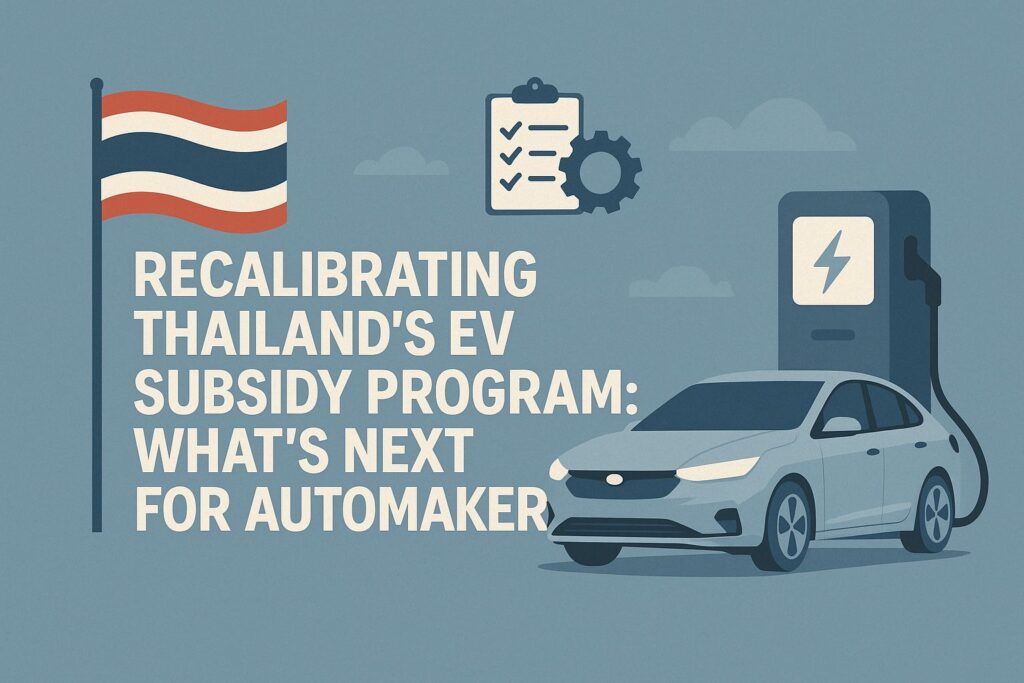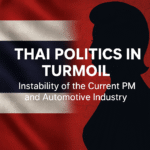Following growing confusion over who’s liable for paused EV subsidies, the Thai government has promised a clear reset—tailoring accountability, protecting investments, and smoothing the pathway toward an electric future.

Why It Matters
EV subsidies have been instrumental in supporting Thailand’s shift toward electric vehicle manufacturing and adoption. Under the EV 3.0/3.5 frameworks, incentives—ranging from tax cuts to per-unit rebates—came with a clear covenant: build locally to secure the benefits. But with slowing market demand and supply chain delays, many players lag behind obligations, triggering a wave of subsidy suspensions that risk disrupting factory planning and investment confidence.
Key Facts– At a Glance
| What | Detail |
|---|---|
| Suspensions Triggered By | Comply‑or‑forfeit pledge: importers must also produce EVs domestically—1:2 ratio by Dec 2026, 1:3 by Dec 2027 |
| Government Response | Announced plans to “clarify the framework,” offering updates to regulations and a roadmap for reinstatement |
| Industry Feedback | EVAT and manufacturers have called for a “light touch” and delayed penalties amid sluggish sales |
| PHEV Policy Update | In tandem, the cabinet is refining tax breaks for plug‑in hybrids—set to commence 1 Jan 2026 |
Deeper Dive
1. From Generous to Conditional
Thailand’s EV schemes, starting in 2022, offered generous support—up to ฿150,000 per unit—on the condition that businesses invest locally. EV3.5 (2024–2027) extended the promise: subsidies between ฿50,000–100,000 tied firmly to local assembly targets, plus import-duty reductions and excise-tax breaks.
2. Facing Reality
Despite initial momentum, global macro pressures hit hard. Domestic car sales fell ~26% in 2024; BEV production under EV3.0 tallied just 16,000 units against a 114,000-unit target. As a result, many companies faced freezes on rebate claims, fined ~฿400,000 per non-compliant vehicle.
3. A Call for Flexibility
Industry players urged the government to ease enforcement, citing pandemic and global economic headwinds. Authorities have responded by relaxing timelines—pushing domestic production targets to 2026–27—and promising procedural guidance to reinstate subsidies smoothly.
4. Parallel PHEV Support
Complementing BEV relief, the Ministry of Finance is updating PHEV tax incentives—effective Jan 1 2026—with a new structure based on electric range rather than emissions alone. This dual-track approach supports both traditional hybrid manufacturers and ambitious BEV investors.
Conclusion
Thailand’s move to clarify EV subsidy suspensions is hardly backpedaling—it’s a smart pivot. The government is balancing the ambition of building a green automotive hub with the reality of market dynamics. With time-bounded relief and added clarity, businesses gain a firmer foundation for decision-making.
Proliance don’t just report registrations—we reveal how Thailand’s EV market evolves in response to these pivotal policy shifts. After all, the best insights come from understanding both the road ahead and the track record behind.

